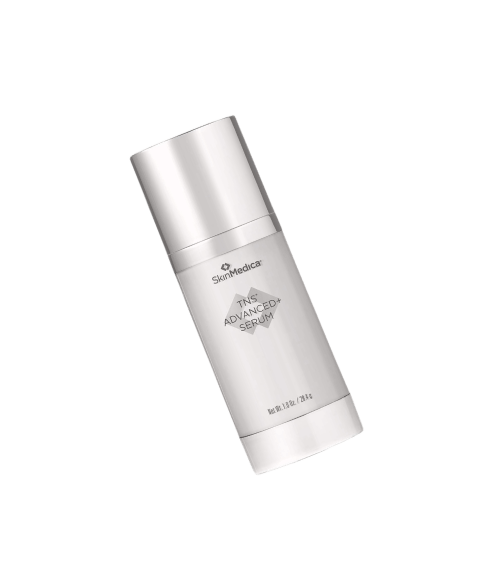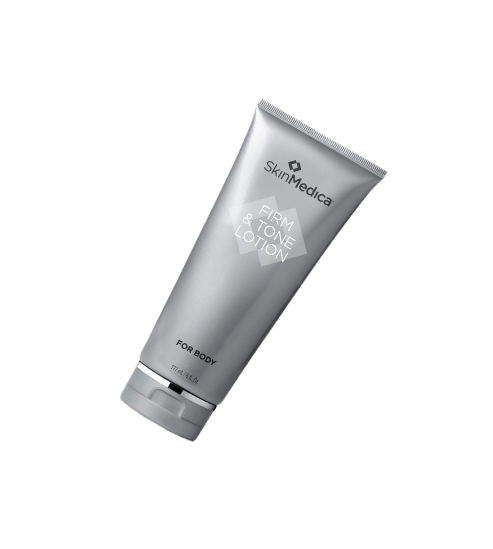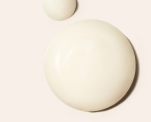Table of Contents
For many people, looking in the mirror means facing the truth about your skin. Genetics undoubtedly plays a factor in your skin’s appearance and texture, but without a daily skincare routine at home, you aren’t maximizing the full potential of your skin. When looking to build your skincare routine steps, you’ll find tons of information online. How do you know what experts to follow and how do you find the right products for your skin type?
Ultimately, the process of caring for your skin is incredibly personal and will likely take some trial and error. As a general rule of thumb, here are six steps to follow to build an effective at-home routine.
#1 Cleansing
Using a cleanser should be the first step in any skincare routine. It is the most basic yet important step of any skincare routine regardless of age. Throughout the day, your skin will naturally come into contact with dirt and environmental pollutants that should be removed by washing your face.
It may sound silly, but how to use a cleanser is something that many people struggle with. Make sure to wash your face both in the morning and the evening and avoid using water that’s too hot as it won’t clear your skin as easily.
Find Your Facial Cleanser
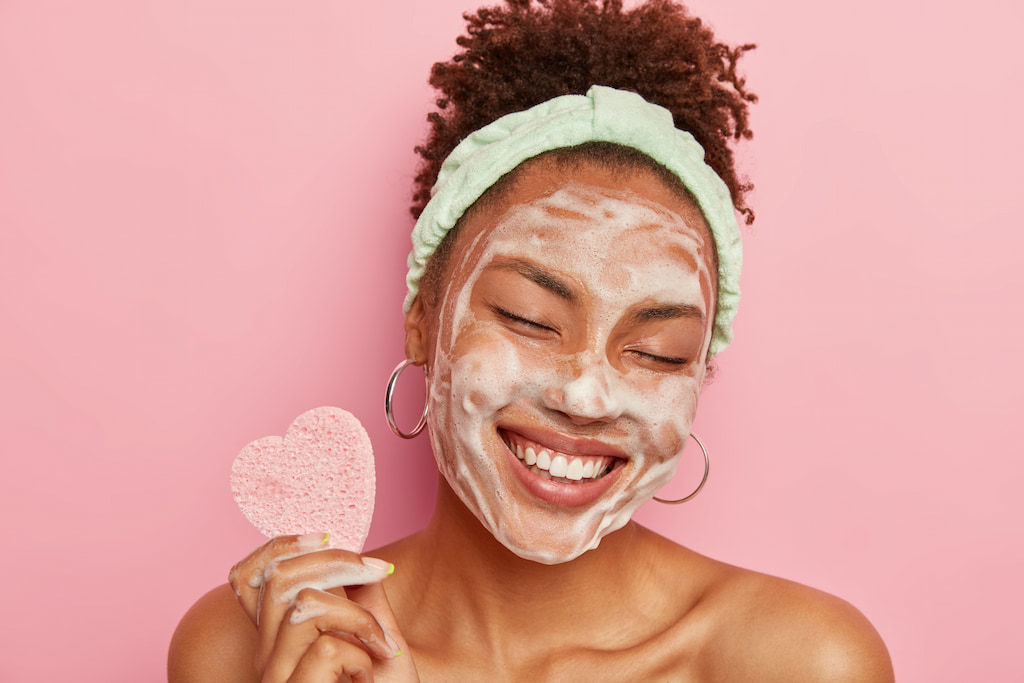
With so many different types of cleansers, you may not know where to begin. Our experts have put together this helpful table to get you started.
| Skin type | Cleanser type | Effects |
| Sensitive | Oil | Oil absorbs oil and these cleansers are great for sensitive skin. Opt for an oil-based cleanser that is non-comedogenic. |
| Oily or acne-prone | Foaming liquid | This type of cleanser turns into an airy foam when it’s mixed with water. This helps to remove dirt and excess sebum from your pores. |
| Dry, red, eczema-prone | Cream or lotion | This type of cleanser typically contains ingredients like shea butter or glycerin to remove impurities and hydrate your skin. |
| Mature skin | Melting balm | Melting balms are similar to a salve-like consistency and turn into a liquid consistency when rubbed onto your skin. These balms help remove makeup and unclog pores. |
| Any skin type | Micellar water | This is a soap-free facial cleanser that has molecules that attract dirt and debris on your skin. Unlike other cleansers, you won’t need to rub off micellar water. |
Additionally, there are scrubbing cleansers that may be used in combination with the above to help exfoliate the skin.
What Does Non-Comedogenic Mean Exactly?
When it comes to your face cleaning routine, you might hear or see the word “non-comedogenic” and wonder what it means. This term applies to products that don’t clog pores or trigger acne breakouts. Non-comedogenic products don’t occlude the skin, block glands, or irritate hair follicles. Common ingredients that are comedogenic include coconut oil and cocoa butter.
Even though these product claims are not tested by the F.D.A., there are many companies that conduct their own testing to determine whether or not a product is non-comedogenic.
#2 Toning
The next step in your face care routine following your cleanser is to use toner. Toner in skincare routines helps to tighten your pores to reduce aging skin. They also restore your natural pH level and smooth out any rough patches.
The most traditional way to apply toner to your skin is to saturate a cotton pad and gently rub it on your face. However, this method isn’t ideal as it can result in a lot of wasted products. Instead, consider applying the toner with your clean hands. The majority of toners can be used both in the morning and at night, but you can make adjustments depending on your skin type.
How to Use Toner
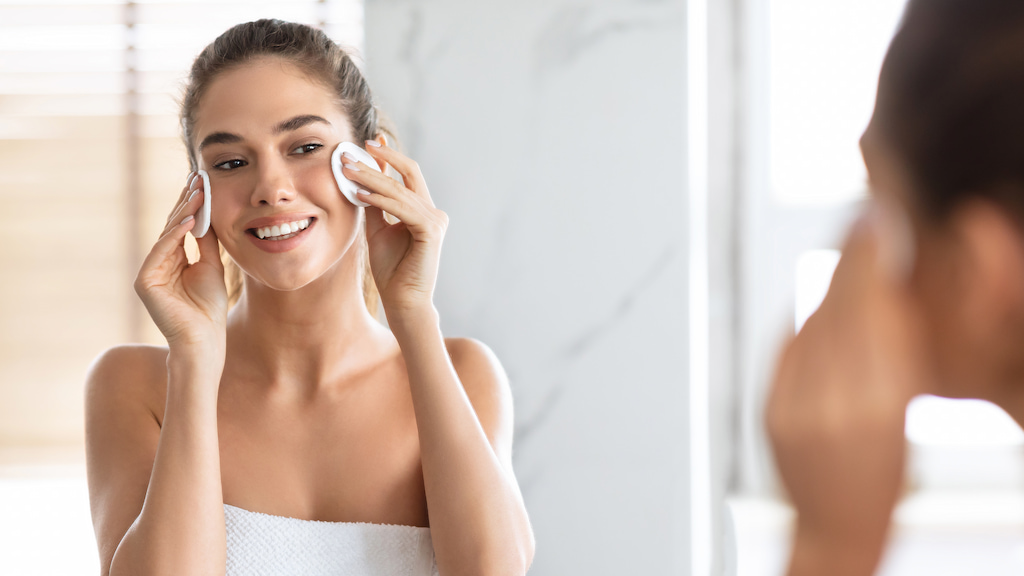
Today’s toner formulas are designed to give your skin a shot of nutrients and aid other skincare products to soak into your skin. While facial toner isn’t an absolutely necessary step in your routine, it can be an easy way to add in a specific ingredient or two that you aren’t getting from your other products.
When shopping for toner, here are some ingredients to keep in mind:
- Vitamin E and C to help fight any exposure to free radicals that are known to age your skin
- Rose water and green tea are ideal for reducing irritation and redness as they have anti-inflammatory effects.
- Hyaluronic acid helps to improve hydration and plump your skin to fill fine lines.
- Alpha and beta hydroxy acids work to remove dead skin cells that may clog pores. These ingredients also improve any skin that is sun-damaged and overall reduces dullness.
#3 Treating With Serums
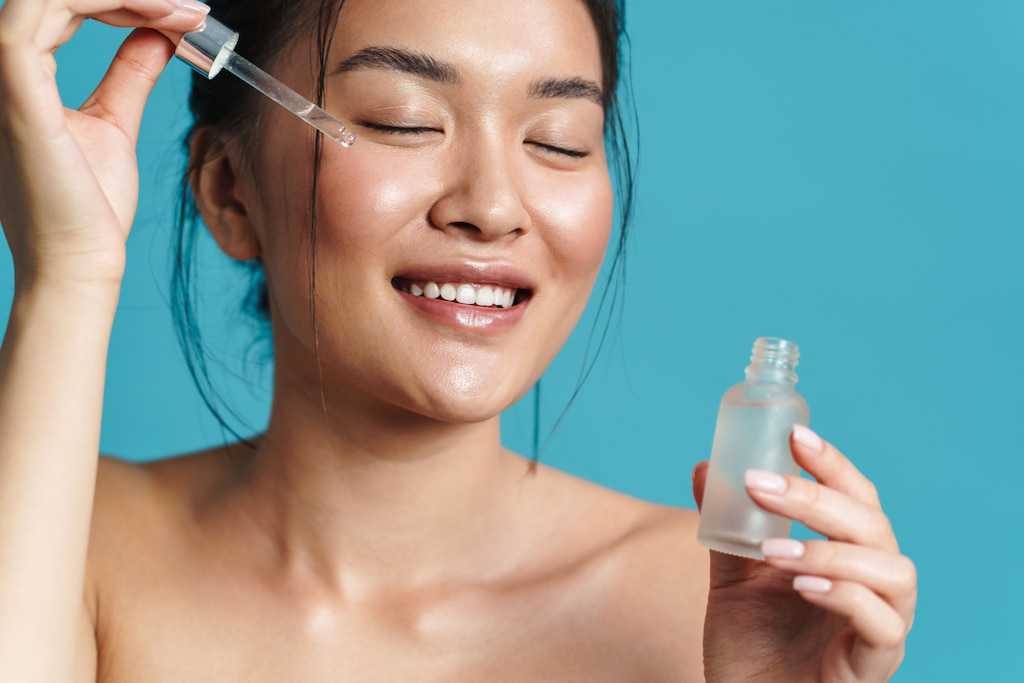
The third step in your skincare routine is to use serums. Think of serums as powerful allies for your skin that deliver a high concentration of beneficial ingredients. There are different types of serums designed to treat different skin concerns. Even if you aren’t treating specific skin issues, you should opt for a serum to get a healthy dose of antioxidants to your skin.
Here are some of the top ingredients to look for when shopping for a serum:
- Hyaluronic acid works to lock in moisture and improve your skin’s barrier
- Vitamin C works to give your skin a brighter appearance and decrease dark spots
- Retinal, peptides, and vitamin B3 work to stimulate collagen production to prevent sagging or aging skin
- Niacinamide and colloidal sulfur are helpful in calming redness and irritation
#4 Moisturizing
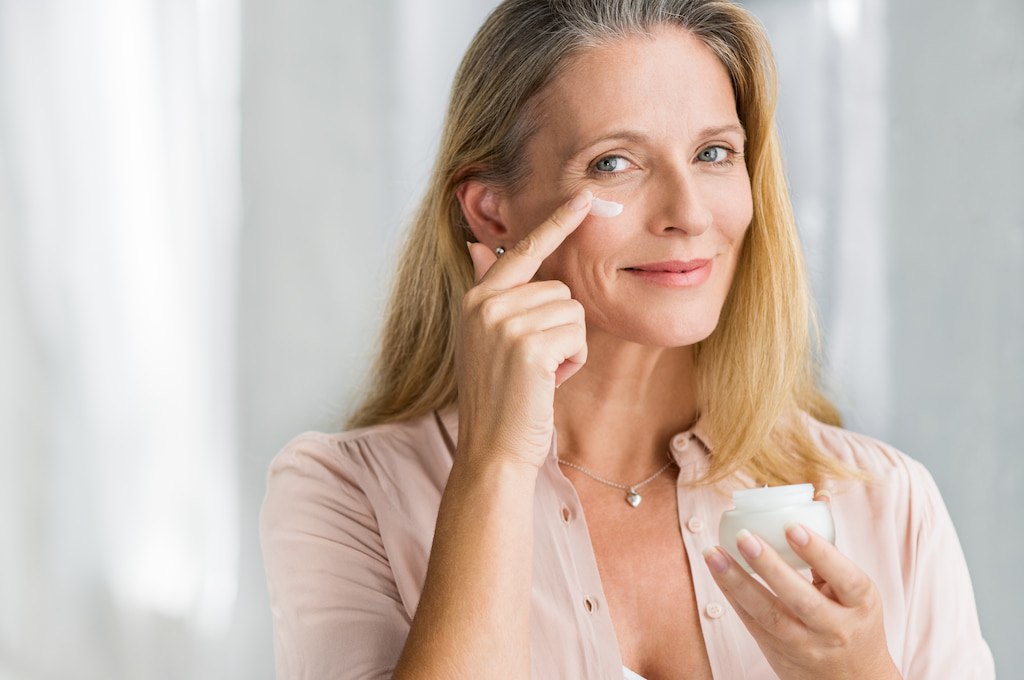
Moisturize, moisturize, moisturize! After you’ve applied your serum, you’ll want to moisturize your face. Did you know that your skin naturally loses its ability to retain moisture with age? Moisturizing helps to soften and hydrate the skin and prevent water loss in your face. If you’re wondering how to moisturize your face, always do so both in the morning and at night, and you should use a moisturizer year-round. This step also helps complement your skin’s natural oils and building blocks including ceramides.
How to Pick a Moisturizer
You’ll want to moisturize your face regardless of your skin type or the time of year. We’ve outlined the best daily face moisturizer for different skin types below.
| Skin type | Moisturizer type | Effect |
| Oily | Gel moisturizer | Gel moisturizers are usually water-based and absorb into the skin quickly |
| Combination or normal | Lotion | This is the standard level of moisture that is beneficial to most skin types. It is usually more moisturizing than gel. |
| Dry | Cream | Cream moisturizers are usually oil-based and are thicker than a lotion. |
| Sensitive (but not acne-prone) | Balm | Balms are heavier in texture and they’re ideal for extremely dry skin. |
The Difference Between a Day and Night Cream
There are day and night face creams that are designed to be applied during certain parts of the day. Any creams that you apply in the morning usually protect your skin from any environmental factors that you’ll be exposed to throughout the day, and they are usually lightweight. Many day creams also have SPF in them in addition to antioxidants.
Night creams instead focus on repairing the damage that may have occurred throughout the day and often have ingredients such as retinal to improve the speed of cellular turnover. Night creams also help to counteract dark spots and replenish moisture that naturally decreases during the night.
Eye Creams, Explained
What about when to use eye cream in skincare routines? While eye creams aren’t always totally necessary, they help to target specific concerns such as hyperpigmentation, puffiness, or dryness. Because the skin around the eye is naturally thin and delicate, it’s important to choose an eye cream that factors in any potential sensitivity. If you have inflamed under the eyes or you notice bags developing, opt for a product that has caffeine, peptides, or hyaluronic acid.
#5 Protect With Sunscreen
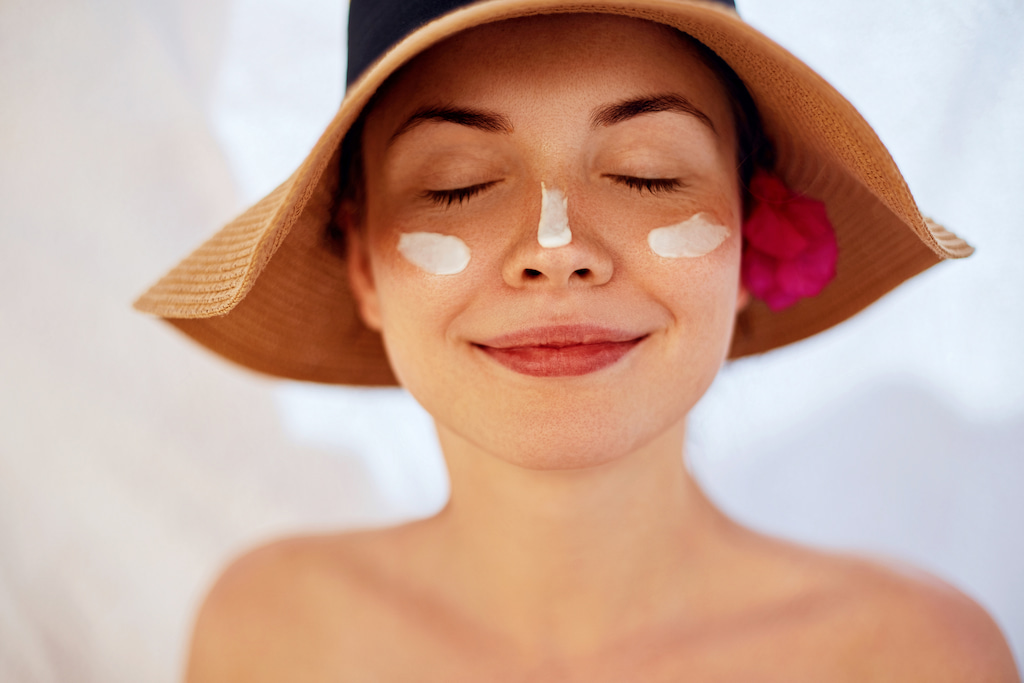
One of the most important steps in your routine is to use sunscreen. If you take one thing from this blog, let it be this! You should be wearing sunscreen on your face year-round even if the sun isn’t out. By wearing sunscreen every day, you help to prevent fine lines and wrinkles from developing.
Sunscreen is also beneficial in improving textural imperfections and it can improve the appearance of your pores over time. Last, but certainly not least, sunscreen can help prevent the development of skin cancer. The best facial sunscreen has built-in broad-spectrum coverage and has an SPF of at least 30.
Decoding Sunscreen Formulas
With so many sunscreen options readily available, you might not know where to begin for your skincare regimen. Here are two different options to consider:
Sunscreen made with chemical ingredients including oxybenzone and octinoxate soaks into your skin to counteract any damage from ultraviolet light.
- Pros: Lightweight, transparent on the skin, easy to apply
- Cons: May cause reactions or irritations, potential health concerns around ingredients like oxybenzone
Sunscreen made from physical ingredients such as titanium dioxide and zinc oxide is another option. These sit on the surface of your skin to deflect the UV rays from causing damage.
- Pros: Minimal risk of irritation or health concerns
- Cons: Can leave a white or gray tint on the skin’s surface
Sunscreen Application 101
Regardless of the type of sunscreen that you choose, make sure that you apply it properly. Ideally, you should apply sunscreen roughly 30 minutes before sun exposure. Reapply it every 2 hours.
If you’re using chemical sunscreen, you should apply it directly onto your skin after you’ve cleaned it. If you opt for a physical blocker, make sure to apply it last in your skincare routine but before you put on makeup. Opt for two tablespoons of product to cover your face, neck, and other exposed body areas.
#6 Splurge on a Spot Treatment
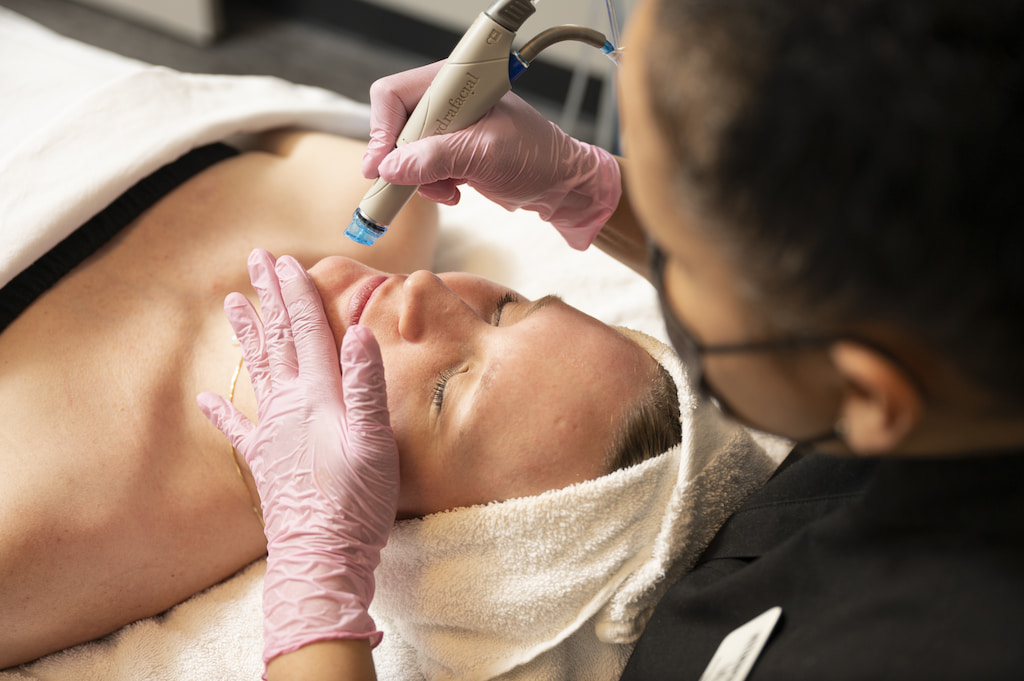
Acne treatment products can help keep your skin calm if you are prone to one-off breakouts. These usually develop when you’re feeling particularly stressed out or you have more on your plate than usual.
We always recommend that our patients invest in a high-quality acne spot treatment. This could come in the form of retexturizing pads, evening gels, or other acne treatment concealers that clear your breakout and work to prevent future breakouts from developing. If you have stubborn breakouts that won’t seem to go away, seek professional treatment.
General At-Home Skin Care Tips
Building a skincare routine that works for you could take time. It could be a trial-and-error process to figure out what combination of products is the most effective for your needs.
Even if you’re spending the day at home, it’s still important to take good care of your skin!
Here’s what our experts suggest:
- Wear SPF every day as it can also protect your skin from blue light that comes from electronics
- Clean your pillowcase often to remove dirt and debris. You can also opt for a silk or copper pillowcase.
- Try sleeping on your back to minimize wrinkles
- Get a good night of sleep to restore your skin
- Keep your space clean
- Add humidity to keep moisture in the air
Skin Care Tips by Skin Type

You’ll want to have a solid understanding of your skin type before you put together a basic skincare routine. We’ve outlined the major categories below.
Skin Care Tips for Oily Skin
If you have oily skin, you might feel embarrassed. Thankfully, there are helpful tips to keep excess shine away:
- Don’t overdo it with drying products or face masks
- Always exfoliate once or twice per week
- Don’t use a cream moisturizer. Instead, opt for a lighter gel moisturizer
- Use a primer or a foundation that has mattifying effects
- Opt for niacinamide serums to reduce oil
Skin Care Tips for Dry Skin
Dry skin can also pose challenges. Here are some skincare routine tips for dry skin.
- Avoid using hot water when washing your face
- Put moisturizer on directly after showering to lock in moisture
- Reduce your intake of salt and caffeine as they can make dry skin worse
- Always bring a lip balm with you as your lips may often be chapped
- Use a hydrating face mask once a week followed by your moisturizer
- Use facial oil after your moisturizer
Skin Care Tips for Combination Skin
Your skincare routine for combination skin should involve a mixture of products. Here’s what we recommend:
- Get familiar with your skin and understand what areas are oily and what areas are dry. For example, many people with combination skin have an oily T zone
- Use gentle products that won’t cause irritation. The hydrating products that you use shouldn’t contain alcohol
- Exfoliate gently and space exfoliation sessions apart if your skin is becoming irritated
Skin Care Tips for Normal Skin
Putting together a skincare routine for normal skin means you are not particularly dry nor particularly oily.
- At night, use a cream or a lotion instead of a gel moisturizer
- Don’t feel the need to constantly try new products as normal skin doesn’t require as much maintenance. Too many products can cause irritation
- Use SPF 30 or higher to protect your skin
Skin Care Tips for Dark Skin
Dark skin could require specific care as there is additional melanin in the skin. Here are some skincare at home tips:
- Use SPF 30 or higher every day as those with more melanin could be more prone to sun damage
- Address hyperpigmentation by using an illuminating serum or another targeted treatment
Skin Care Tips for Light Skin
The daily skincare routine for light skin should revolve around SPF.
- Use SPF 30 or higher even if it’s cloudy outside
- Be mindful of rosacea as it is common for those with light skin. Signs of rosacea include eye irritation, flushed skin, or small red bumps.
Skin Care Tips for Acne
Those with acne-prone skin may feel frustrated with what products to use. Here are some skincare essentials to keep your skin clear.
- Know the type of breakouts that you get the most. For example, if you often get whiteheads, you’ll want products with salicylic acid.
- Keep your skin moisturized. It’s tempting to dry your skin out so your skin produces less oil, but this could result in additional oil production.
- Don’t pick at breakouts as it could lead to scarring
- Use retinol in the evening to address breakouts and aging
Our Experts Can Help!
Developing a skincare routine can be daunting on your own. Tap into the help of our skincare experts at the Metropolitan Skin Clinic for hands-on guidance and individual support! If you’re ready to take the next steps toward the best skin you’ve ever had, connect with our team today!

Please select a virtual or in-person consultation or call us (952) 288-2230





